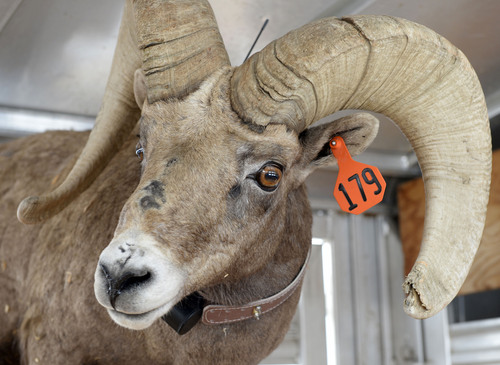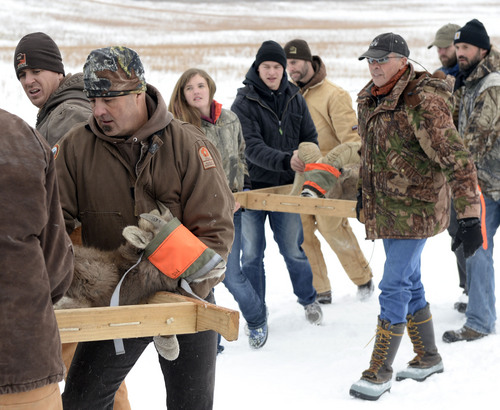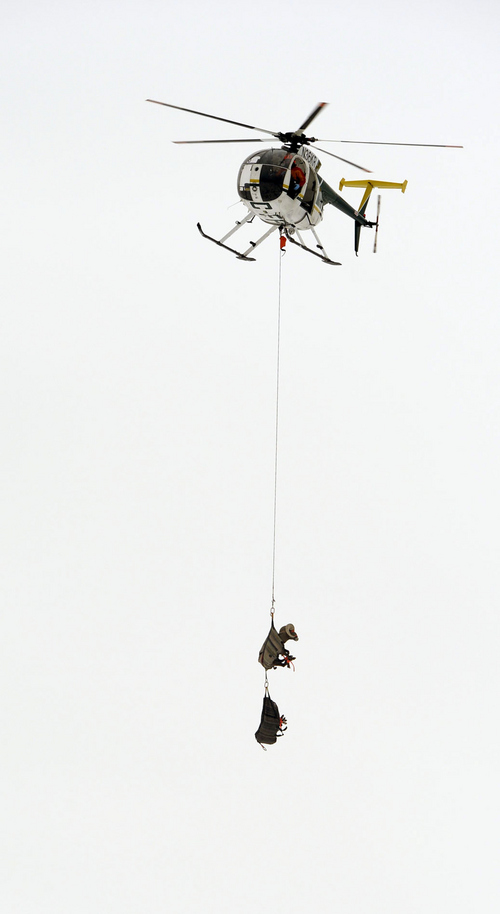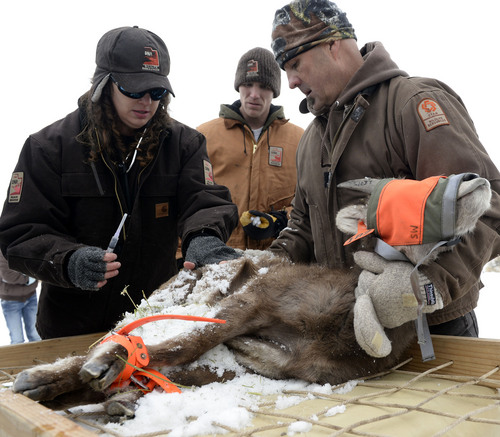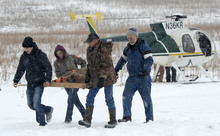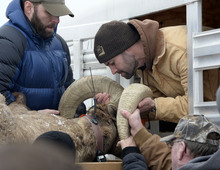This is an archived article that was published on sltrib.com in 2014, and information in the article may be outdated. It is provided only for personal research purposes and may not be reprinted.
Antelope Island • Wildlife biologists went to the "nursery" at Antelope Island State Park on Tuesday to help start a new bighorn sheep herd in Utah.
Using a helicopter and net guns, a contracted wildlife capture crew started the process of rounding up 30 bighorn sheep from the largest island on the Great Salt Lake. Once captured, the wild sheep were hobbled, blindfolded and flown to a staging area, where biologists from the Utah Division of Wildlife Resources (DWR), Utah State Parks and volunteers conducted medical checkups.
The mammals were then loaded into horse trailers for a road trip to the mountains east of Oak City in Millard County.
The mountains there were once home to the native bighorn sheep, but like many other herds across Utah, they were eventually eradicated soon after the state was settled.
"Most Utah ranges had sheep at some point," said Dustin Schaible, bighorn sheep biologist for the DWR. "We are reintroducing them where we can. Antelope Island is a good source for us to provide animals for transplants because it also helps us maintain population goals for that herd."
There are only two bighorn sheep hunting permits allowed on Antelope Island each year, and the only other reduction comes from natural mortality.
Transplants allow wildlife managers to keep the population within the numbers determined by the available bighorn food sources on the 28,000-acre island.
Antelope Island has served as a nursery herd for other new herds, most recently from 2005 to 2008 when more than 90 animals were moved to the Stansbury Mountains. Antelope Island State Park wildlife biologist Steve Bates said the bighorn sheep population objective is 150 animals, and there are now about 180 on the range.
The transplant was funded through conservation hunting permits sold annually to the highest bidder by groups such as the Utah chapter of the Foundation for North American Wild Sheep and Sportsmen for Fish and Wildlife.
Money from those auction tags is dedicated to go back into the same species.
"Sportsman dollars generated from those permits go specifically back in projects like this and habitat work," said Byron Bateman, president of Sportsmen for Fish and Wildlife. "It is exciting to see all this great work to start a new herd. We have more projects going on in the last few years than the last 10 years combined."
The bighorn should find their new home more than suitable, despite the fact that it was the site of the 100,000-acre Clay Springs fire in 2012.
"That actually improved the sheep habitat," Schaible said. "The fire replaced old growth pinyon and juniper and opened up the understory for better production. Sheep are a species that rely on their vision to escape predators and they like the openness opposed to the overgrown pinyon and juniper."
The bighorn on Antelope Island are transplants as well, having only landed there in 1997 during a reintroduction. Since then, the herd has helped augment or start three other populations.
Five bighorn sheep, including a big ram, were captured by noon Tuesday. A light snow started to fall just as biologists worked on the last three animals.
Efforts to reach the goal of 30 sheep continued until dusk Tuesday and were scheduled to resume Wednesday.
Twitter: @BrettPrettyman


